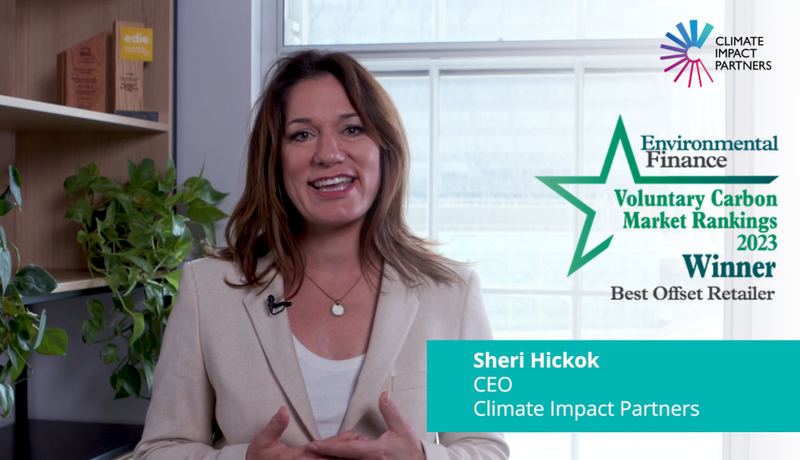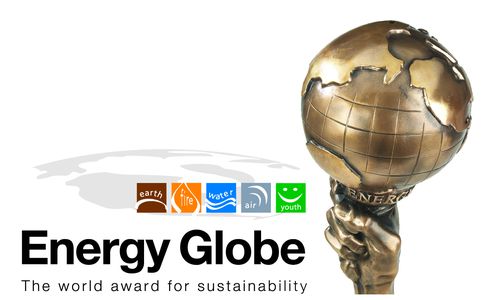Introduction to carbon neutral and net zero
When it comes to tackling climate change, terms like "carbon neutral" and "net zero" are popping up everywhere – from corporate pledges to government policies.
But what do they actually mean, and how are they different? Both are about reducing the impact of greenhouse gas emissions, but they take slightly different approaches to address our role in global warming.
We’ll break down what carbon neutral and net zero mean in simple terms, why they’re important, and how they connect to global efforts like the Paris Agreement. Understanding these goals is key to creating a cleaner, healthier planet for everyone.
What does carbon neutral mean?
Carbon neutral means balancing the amount of carbon dioxide (CO2) we release into the atmosphere with actions that remove or offset the same amount of CO2. Think of it like balancing a scale: if you add CO2 on one side, you need to remove or cancel it out on the other side.
This is typically done by reducing carbon emissions as much as possible and compensating for the remaining emissions through actions like carbon offset projects (e.g., reforestation, renewable energy investments) or carbon capture technologies.
Carbon neutral can refer to an activity, a product, or a company/organization. Being carbon neutral doesn’t mean no emissions at all – it means taking responsibility for the emissions created and making up for them.
In 2024, nearly 35% of Fortune Global 500 companies had a carbon neutral commitment. Learn more here.
What does net zero mean?
Similar to carbon neutral, net zero involves balancing emissions but it goes beyond carbon emissions and includes all greenhouse gases, like methane and nitrous oxide.
Net zero is about deep, systemic reductions and prioritizes cutting emissions as much as possible across all areas – like energy, transportation, and supply chains.
The Paris Agreement adopted at COP21 outlined that we must reach net zero emissions by 2050 in order to limit the average global increase in temperature to 1.5 degrees Celsius. Staying under this limit helps avoid the most serious effects of climate change, like extreme weather and rising sea levels.
The Paris Agreement has been signed by nearly every country in the world. Companies and organizations of all sizes are also increasingly setting net zero targets that align with the global climate goals set forth in the Paris Agreement.
In 2024, 45% of Fortune Global 500 companies had a net zero commitment. Learn more here.
What do carbon negative and carbon zero mean?
Carbon negative means that more carbon credits are purchased for offsetting than the total emissions of the entity. Similar claims to this are climate negative, climate positive or carbon positive.
Carbon zero means that no carbon emissions are produced from a product, company, or activity, essentially indicating a complete absence of carbon dioxide released into the atmosphere.
How do carbon neutral and net zero differ?
Carbon neutrality focuses on balancing CO₂ emissions, often through offsets, with a narrower scope and shorter-term focus. Net zero covers all greenhouse gases across the value chain, requiring deep reductions before neutralizing residual emissions, aligning with long-term climate goals.
Compared to carbon neutral, net zero includes Scope 3 emissions and is a longer-term goal.
Scope of emissions
Carbon neutrality often focuses on Scope 1 and 2 emissions. These are emissions that come from a company’s operations and are controlled by the company, such as fuel burned during the manufacturing process or in company vehicles (Scope 1) or the electricity needed to turn the office lights on and power computers (Scope 2).
Net zero typically includes Scope 1, 2, and 3 emissions. Scope 3 emissions, often called supply chain emissions or value chain emissions, include emissions associated with a company’s suppliers as well as how its customers use and dispose of the product.
Timeframe
Carbon neutral can be achieved in the short term and is a practical way to start addressing climate impact. It focuses on offsetting carbon dioxide emissions immediately, allowing companies, organizations or individuals to balance their emissions without necessarily making significant reductions right away. It helps people take responsibility for their emissions now.
Net zero is a longer-term goal. It requires a strategic plan aligned with science-based targets to drastically reduce all greenhouse gas emissions over time, aiming for systemic changes across industries and operations. Net zero strategies can include carbon neutral activities.
How to achieve carbon neutrality
- Measure emissions: First, a company calculates how much CO₂ it’s releasing into the atmosphere. This could come from things like energy use, transportation, and manufacturing processes.
- Reduce emissions: Next, the company looks for ways to reduce these emissions. This could mean using less energy, switching to renewable energy like wind or solar, or improving efficiency in operations.
- Offset emissions: For the emissions that can’t be reduced right away, the company purchases carbon credits. This could involve investing in projects that remove or avoid CO₂, such as reforestation and afforestation, clean cooking technology, and sustainable infrastructure initiatives.
Becoming carbon neutral can take a company several years and it is not a one-time action. For many companies, organizations, and even events, carbon neutrality is typically reviewed and recalculated on an annual basis. This allows them to measure their emissions for the past year, make adjustments, and buy new offsets to balance out any emissions produced.
How to achieve net zero
- Understand the emissions: The first step is for a company to measure all its emissions – this includes everything from energy use to the transportation of goods and even emissions from suppliers.
- Set reduction targets: Next, the company sets science-based targets to reduce emissions across the value chain. This could involve switching to renewable energy like solar or wind, improving efficiency in operations, or using cleaner technologies in manufacturing.
- Find emission hotspots: The company looks for areas where emissions are highest (like energy use or transportation) and focuses on cutting them first. This might involve changing suppliers, improving logistics, or even redesigning products to be more sustainable.
- Invest in carbon removal or offsets: After reducing emissions as much as possible, the company buys carbon offsets or invests in projects that remove or prevent emissions, like nature-based solutions, renewable energy, and new carbon technologies.
- Track and report progress: A company should regularly check how it's doing and make adjustments to keep improving. Transparency is key, so sharing progress with the public demonstrates how committed the company is to reaching net zero.
Carbon neutral examples
Lime
Lime, the world’s largest shared electric vehicle company, is an excellent carbon neutral example. Since its founding in 2017, Lime has provided more than 250 million rides on shared e-bikes and e-scooters, in more than 200 cities across 27 countries on five continents.
In Paris alone, Lime has provided more than 25 million rides as a clean, safe, and affordable alternative to cars. In 2020, the company decided to go the extra mile and make its Paris fleet, and every kilometer traveled, carbon neutral.
Renewable electricity was purchased for all the e-scooter charging and for its warehouses, electric vehicles have been introduced to manage the fleet, and its extensive repair and reuse program helps keep scooters and their parts operating on the streets longer and enables recycling 97% of materials used in e-scooters at their end-of-life.
Yorkshire Tea and Taylors of Harrogate
Another carbon neutral example is Taylors of Harrogate’s Yorkshire Tea, one of the best-selling teas in the UK, sourced from the world’s best tea growing regions.
In 2015 Taylors set about making all its products carbon neutral by 2020 with a program that also supported the livelihoods of the smallholder farmers on which it depends.
It worked with the Kenyan Tea Development Agency (KTDA) to assess the energy efficiency of the factories supplying tea and found ways to make savings, and it looked for new ways to cut down its carbon emissions at its head office in Harrogate, England.
Taylors then supported carbon projects that were developed to directly benefit the farmers within its supply chain. These projects in supplier communities contribute more than two thirds of the verified emissions reductions and removals that make the products carbon neutral.
Net zero examples
BCG
An example of net zero is Boston Consulting Group (BCG), which has been a pioneer in business strategy since 1963. BCG has a global presence that includes 22,000 employees spread across offices in more than 90 international cities and clients from the private, public, and not-for-profit sectors.
BCG has been a CarbonNeutral® certified company since 2018 and in 2020 they pledged to achieve ‘net zero-climate impact’ by 2030.
To do this, the firm has increased the ambition of its greenhouse gas emissions targets and aims to cut its emissions intensity in half by 2025. As part of this goal, BCG will reduce its energy and electricity-related emissions (Scopes 1 and 2) by 92% and cut its business travel emissions (Scope 3) by 48.5%.
The firm expects to meet this target largely through planned changes to ways of working and travel norms, and to achieve the remaining reductions by supporting the use of sustainable aviation fuel (SAF) for flights taken by BCG employees and through expected efficiency gains from airlines.
Sky
Another net zero example is Sky, a leading European media and entertainment company, with more than 30,000 employees and 23 million customers across six countries.
Sky has committed to becoming net zero by 2030. They intend to achieve this by switching its entire fleet of 5,000 vehicles to zero emissions vehicles, ensuring its new studios, Sky Studios Elstree, are the most sustainable production facilities in the world, and continuing to achieve 100% renewable electricity.
Sky will offset any remaining footprint from its entire value chain through nature-based carbon removal projects such as forest, mangrove, and seagrass projects.
The role of carbon credits in carbon neutrality and net zero
Carbon credits are a practical way to address emissions. Some emissions – like those from airplanes or manufacturing – are difficult to eliminate right now. Carbon credits act as a bridge, helping to address these unavoidable emissions while companies work on long-term solutions to cut their carbon footprints entirely.
Carbon credits are an important tool in achieving carbon neutrality and net zero, but they work best alongside efforts to reduce emissions at their source. This approach ensures that credits are used responsibly, complementing real, systemic changes rather than replacing them.
Not all carbon credits are created equal. For an offset to truly help fight climate change, the project behind it—like planting trees or building renewable energy systems—must deliver measurable, lasting benefits. If the project doesn’t genuinely reduce or remove emissions, the credit won’t make the impact it promises.
This is where certifications come in. Organizations like the Verified Carbon Standard (VCS) or Gold Standard ensure that carbon projects meet strict criteria, like being additional (wouldn’t have happened without funding), permanent, and scientifically verified. These certifications give buyers confidence that their offsets are credible and contribute to real climate action.
Standards and regulations for carbon neutral and net zero
Achieving carbon neutrality and net zero can seem complex, but clear standards and frameworks help businesses, countries, and even individuals work toward these goals. Standards and frameworks ensure accountability and transparency, so climate claims aren’t just empty promises.
Common standards and frameworks
- CarbonNeutral® Certification: Created in 2002 and managed by Climate Impact Partners, CarbonNeutral® certification provides a clear, credible, and transparent framework for carbon neutral claims.
- ISO Carbon Neutrality: ISO’s Carbon Neutrality Standard ensures that carbon neutrality efforts are scientifically valid and communicated transparently.
- ISO Net Zero Guidelines: The Net Zero Guidelines help those working towards net zero to understand net zero definitions, principles, and claims.
- SBTi Net Zero Standard: The Corporate Net Zero Standard is used by companies to set net zero targets consistent with limiting global temperature rise to 1.5°C.
Regulatory landscape
The regulatory landscape for carbon neutral and net zero is evolving rapidly as countries, industries, and organizations strive to tackle climate change. Currently, carbon neutral and net zero goals are not mandatory for most companies and organizations, but this is changing.
Many businesses set carbon neutral or net zero goals voluntarily as part of their sustainability strategies, but enforcement varies widely depending on local regulations and industry sectors.
Countries are increasingly regulating environmental claims to prevent greenwashing (misleading environmental claims) and ensure that commitments genuinely contribute to climate goals.
For example, in the European Union (EU), the EU Corporate Sustainability Reporting Directive (CSRD) requires companies to disclose climate-related goals, emissions data, and progress toward targets, ensuring carbon neutral and net zero claims are backed by data.
In the US, the Federal Trade Commission provides guidelines to prevent misleading environmental marketing claims, including those about carbon neutrality. Updates may include stricter requirements for net zero claims.
In many regions, countries are introducing policies that incentivize certain sectors (like energy, transportation, and manufacturing) to reduce emissions or achieve net zero by specific deadlines.
Benefits of carbon neutral and net zero
Achieving carbon neutral and net zero goals brings numerous benefits for the environment, businesses, and individuals.
Environmental benefits
For the planet, these efforts help slow climate change by reducing greenhouse gas emissions, which are the primary cause of global warming. By cutting these emissions, we can prevent extreme weather events like heatwaves, floods, and storms, and protect natural ecosystems, wildlife, and biodiversity.
Additionally, projects funded through carbon credits, like reforestation, help absorb CO₂, further aiding in climate stability and preserving vital natural resources.
Benefits for businesses
For businesses, committing to carbon neutrality or net zero enhances their reputation, as more customers and investors are choosing brands that prioritize sustainability.
These companies often experience cost savings through energy-efficient technologies and renewable energy, which reduce long-term expenses.
Furthermore, as environmental regulations become stricter globally, businesses that adopt these strategies early on are better positioned to stay competitive and avoid penalties or restrictions.
Benefits for people
For individuals, carbon neutrality and net zero efforts lead to healthier communities by improving air and water quality, reducing pollution, and lessening respiratory illnesses and waterborne diseases.
By making sustainable choices, such as using green energy or supporting eco-friendly brands, individuals can play a role in driving positive environmental change. Collectively, these actions help create a more sustainable future for everyone.
Challenges and criticisms of carbon neutral and net zero
Carbon neutrality faces challenges with offset quality and accountability, while net zero requires deep emissions cuts across entire value chains, including hard-to-control Scope 3 emissions. Both demand significant investment, innovation, collaboration, and vigilance against greenwashing.
Challenges
- Difficulties reducing emissions: It’s hard for some industries, like aviation or heavy manufacturing, to fully eliminate their emissions. These sectors may still rely on fossil fuels, making it tough to achieve net zero without relying on offsets.
- Cost and technology: The technologies needed to capture carbon or switch to clean energy can be expensive and aren’t always available at the scale needed, especially in developing countries.
- Measuring impact: Tracking and accurately measuring emissions can be complicated, especially for businesses with global supply chains.
Criticisms
- Over-reliance on offsetting: Some argue that using carbon credits can be a shortcut, allowing businesses to claim they’re carbon neutral or net zero without making enough effort to reduce their own emissions.
- Greenwashing: There’s concern that some companies or organizations may misuse these claims for marketing purposes without making real, meaningful changes to reduce their environmental impact.
- Unclear standards: There’s still a lack of universally agreed-upon rules and definitions for carbon neutrality and net zero, leading to confusion about what companies are really doing to achieve these goals.
The road ahead
While achieving carbon neutral and net zero goals is essential for tackling climate change, it requires genuine, systemic efforts from businesses, governments, and individuals.
The road ahead may be challenging, but advancements in clean technologies, stronger regulations, and clearer standards are paving the way for more meaningful progress.
As we move toward a sustainable future, we can expect greater transparency in sustainability reporting, more widespread adoption of renewable energy, and innovations in carbon capture and offsetting projects.
The commitment to reducing emissions and achieving carbon neutrality or net zero will continue to shape the way we live, work, and interact with the planet, helping to create a healthier, more resilient world for generations to come.
The Latest Insights From
Climate Impact Partners

SBTi Net Zero Draft V2.0: Your Key Questions Answered
Climate Impact Partners experts answer key questions on the SBTi's draft Corporate Net Zero Standard V2.0.
Read more
Navigating the SBTi's Proposed Net-Zero Revisions: Implications for Carbon Credits, Removals, and BVCM
An overview of the key updates from the SBTi’s proposed Corporate Net Zero Standard (V2.0) and implications for carbon credits.
Read more
Women Accelerating Action in the Carbon Markets
Women are shaping the future of carbon markets, while driving real impact, fostering equity, and ensuring climate finance delivers meaningful change.
Read more






















